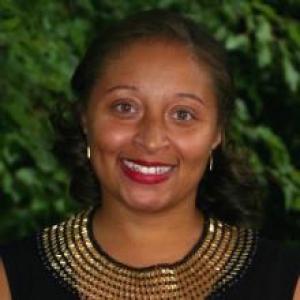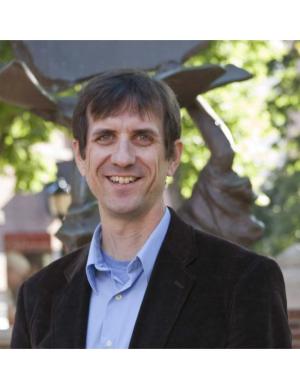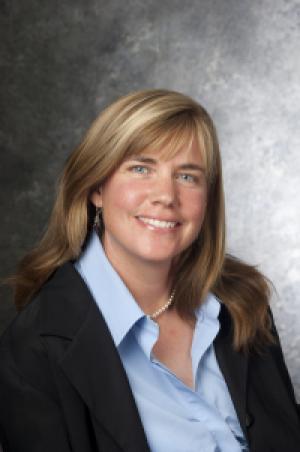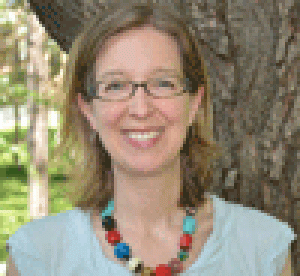Resources

The first time I did this in class, my students looked at me like I was crazy. I wanted to try something new. The traditional rigid “academic dialogue” model was no longer sufficient to inspire courage and honesty about topics that were dividing the world right in front of my eyes. They expected me to throw some discussion questions on the PowerPoint, break up into small groups for discussion, and then have them report out into a larger class discussion. I use this method of discussion often. Today, I invited them into an embodied dialogue. I smile warmly and offer instructions for our dialogue together. “I’m going to say a statement. If you agree with it, stand on the right side of the room. If you disagree with it, stand on the left side of the room. And if you are unsure, don’t know yet, or want to say, ‘It depends,’ you stand in the middle.” Embodied Dialogue is Generative The vitality in the room changes as students anticipate the first statement. Statement 1: “It is possible for a Christian to be racist.” The energy in the room is palpable as students physically take their stance. The movement creates a sense of generativity as students anticipate where their peers will stand. I wait for the movement to cease, for students to be in place. “Ok, is everybody in place?” I ask. I read their faces. Most students stand eager to engage. Others look about pensively, still trying to figure out if they want to move from one side to the other or to the middle. The statements fluctuate between levels of intensity. We move from less intense statements like “Education is the key to success in life,” to more intense statements like “Metal detectors keep schools safe,” and “Students should be suspended from school and arrested for violent behavior.” Then we move to even more intense statements like “God is at work in the government,” and “Protest is essential in America in order for justice to take place.” Embodied Dialogue Prompts New Awareness The “take a stance” activity invites students to exercise agency during the entire process of dialogue. Each participant actually gets to choose where he or she stands, even if that stance is “I don’t know.” Perhaps the recognition that everyone is invited into a certain level of risk helps level the dialogical playing field. Choosing our stance is nothing new. We are always choosing where to stand. This activity makes student aware of that. When they are standing in place students suddenly become aware of their body. Not just their body, but the bodies of others. Many are surprised to see which side of the room their peers decide to stand. “Why are you taking this stance?” I ask students. “Please tell us why you are standing where you are.” The invitation to respond to the “why” question is one of the most effective ways to invoke critical thinking. Students hear from those who stand with them, discovering that even those who say “I agree” may choose this stance for reasons different than their own. Many even surprise themselves with their own inability to say why they have taken their particular stance. The embodied awareness of their stance invites them into further exploration, into further participation. In a developmental stage where undergraduate students are still making sense of who they are, what they believe, and why they believe what they believe, it seems unfair to force them to choose one position or the other. And yet, this pressure to choose one way dominates Western understandings of adulting. To be a mature adult, we must know the “why.” We must know the right answer. The either/or dichotomy sometimes traps students. Captive to the desire to please those they admire, or to feign intellectualism, students rush to an answer. When students rush to an answer, they rush past another’s perspective in a hurry to arrive at their own. Our dialogue is no longer participatory. Mutuality is exchanged for “right” or “wrong.” We don’t internalize what others say in order to examine our own thinking; rather, our way of understanding becomes the rubric by which we judge all else. We judge, assess, and evaluate what others say against what we already think. Embodied Dialogue Illuminates the In-Between What I have found essential for this assignment is the in-between space. I tell students that at any point during this activity they can move from “I agree” to “I disagree” or from “I disagree” to “I don’t know.” It never ceases to amaze me how often students move in between these spaces. They exercise the muscle that enables critical thinking in real time. They demonstrate with their bodies that our opinions and perspectives can change and can also be changed in dialogue with others. How many times do we only provide two options for students? Yes or no! Democratic or Republican. Liberal or Conservative. Providing the either/or inadvertently communicates that there is only one right answer, and we are required to know it. We must choose a side, the right side. Our thoughts have to be settled. The incessant need to box people’s thoughts into categories does not leave room for everything else that comes between right and wrong, yes and no. It leaves no room for the nuances that exist in the liminal space of not yet, not sure, uncertain. It hides the continuum that always exists when it comes to peoples’ thought lives and rationales. What has fascinated me the most in this activity is how students create their own continuum. The three clear positions I offer somehow get stretched out during the game. Students who are not quite in the “I agree” category may lean there but may stand in the middle between “I agree” and “I don’t know.” They make the invisible visible through their bodies, helping us to see that even three clear positions cannot capture the complexity of some topics. The invitation to the in-between space is an invitation to sit in the “I don’t know.” To acknowledge that we exist in a world of unknowns and uncertainties more often than not. Yet in our rush toward certitude, we sometimes miss the process that gets us from “I dont know” to “I know,” “I feel certain,” and to “I agree” or “I disagree.” What if our desire for questions and answers was really an attempt to simplify hard, unanswerable questions? What if a more faithful way to seek understanding is through “questioning and wrestling?” [1] What if we refused to settle into the comfort and assurance of our “I knows”? What if we were required to embrace our “I thinks” and allow ourselves to be formed in and through our wrestling with God? These are the questions that emerge for me as an educator when I facilitate this activity. Embodied Dialogue is Participatory Participation is inherent in the word “dialogue;” thus, participatory dialogue should be a given. But it’s not. Not all dialogue is participatory. Too many students get lost in large group classroom discussion, are never really challenged to reflect critically. The one or two students who have something to say speak. Those who are more reserved remain silent, keeping their thoughts to themselves. It is possible to be invisible even in dialogue. Embodied dialogue makes it difficult for students to hide. This activity invites even the quietest students to be actively engaged in the dialogue. Academic dialogue may also be one-sided, where students tend to talk at, about, and over other students. Embodied dialogue is about talking with others. It invites not just participation but mutuality. To invite others to engage with our thought life even as we engage with theirs. Additionally, it models visually that our deepest beliefs often put us in proximity or out of proximity to certain people, especially when the conversation centers around diversity, equity, and inclusion. Hot-button topics remain easy to avoid in the classroom. This activity has become a regular part of my pedagogical toolbox, especially when engaging topics that are intense. After saying a statement, I hear students respond, “Woah, that’s tough.” In other words, the “hot” doesn’t disappear from the topic when using this approach. Students still exhibit passion and conviction. At the same time, students are less cautious with sharing. Something about the approach itself is disarming. This approach to dialogue offers the learning community space to reflect on controversial topics in a generative way. Dialogue was never intended to be passive. Rather, dialogue is an active, dynamic process where students are invited to explore, discover, and come to know themselves, others, and the world differently. [1] Carol Lakey Hess, “Echo’s Lament: Teaching, Mentoring and the Danger of Narcissistic Pedagogy,” Teaching Theology and Religion 6, no. 3 (2003): 135.

Our only chance to achieve collective happiness comes through extensive conversation punctuated here and there with votes, which will themselves over time, in their imperfections, simply demand of us more talk. ~ Danielle Allen [1] I grew up during the transition from handwritten comments on high school report cards to a pre-populated set of options for teachers to deploy each quarter in a tidy, standardized font. The most frequently deployed comment on my cards: Talks too much in class. Reading Danielle Allen’s Our Declaration, a lively and provocative defense of the centrality of equality in the Declaration of Independence, I have come to appreciate that perhaps I was just a budding democrat, joining the timeless quest to “achieve collective happiness” through “extensive conversation.” I am not sure my teachers saw it through quite the same lofty lens. While the college classroom is no stranger to the phenomena of the student who talks too much—and most often, those students look a lot like me—it seems the more pressing concerns have to do with the stifling (or alternatively, trifling) of conversation. We can’t talk about the election, the protests, the mask mandate, the insurrection, the [fill in the blank with any issue of collective importance] because. . . it is too polarizing, it leads to cancel culture, it offends. . . . Or, in that familiar, euphemistic sleight of hand in every professor’s tool belt: we have too much content to cover, too many lecture slides to get through. We might well ask, are we doing enough to encourage that most fundamental habit of a democratic people: talking with one another? What would it mean to organize our syllabus around the conditions for conversation? This does not mean content drops out. But in this particular moment, I have found that a little content goes a long way—that what many students appreciate most is simply the opportunity to talk, or more accurately, to be heard. I spent the month of June piloting a college-level course for local high school students. Though there were several elements that made this course idiosyncratic—small class size, embedded mentors, self-selected three-week summer intensive—it was a reminder of how our classrooms can promote the habits of the heart de Tocqueville and those who followed him saw as the seed from which formal democratic institutions arise and are sustained. At the start of our second week of class, I invited another student to come in and facilitate a talking circle process, to model the underlying circle logic of restorative practices we had been focusing on. I rarely use circles like this in class, aware of, among other things, the fine line one walks between modeling conversation and group therapy, as well as the problems of scale and trust in classes that tend towards the 25–35 student range rather than the 5–8 range. But in this unique setting, the circle process worked well on many levels including, most importantly, modeling the relationship between speaking and being heard—of having a voice. Critically, I was a participant in the circle, not the circle-keeper (or facilitator). This meant that conversation did not flow, as too often happens in seminars, from professor to student to professor to another student. After finishing the circle, the students requested that we do another one before the end of our three weeks together. This time the students designed the questions, skillfully constructing a set of guiding prompts that moved back and forth between lighter fare (funniest memory from class) and self-evaluation (how will you bring what you learned in this class into your life after class ends?). A consistent refrain in that closing circle was how different this class was than what they have experienced in high school. Here they were co-creators, rather than passive recipients of knowledge. Their views were sought out, heard, and had an impact on the flow and content of the class. The passion with which they critiqued their high school experience gave me pause to wonder about what models students entering our college classrooms have for “talking too much” in class, or, rather, “achieving collective happiness” through “extensive conversation,” that is, for becoming participants in a democracy. It is easy to dismiss the unique features of a college classroom as not applicable to the wider forums where fellow citizens struggle to recognize one another as the “we” in “we, the people.” But I take some hope from the other consistent refrain in our class: these students were hungry for practical advice on how to have conversations with people with whom they disagreed about the issues we are facing as a society. In a class on race, resistance, and reconciliation, what they most wanted was to be heard and to learn better how to hear others—a request for the very thing college seminars would seem to be designed for, the very thing that democracy demands of us. That is hopeful: A generation cognizant that they do not have good models for this, that the hegemonic social media landscape in which their communication skills are being developed are not up to the task. Circles, of course, are not a panacea; they, too, are threatened by the same hyperbole of many trending “solutions” to the ills undermining our democratic experiment. I am under no illusions that the work we do in our classrooms will magically solve the crises of societal and institutional trust, or even that it will hold at bay the forces intent on undermining the conditions that make the work of democratic habit formation central to the academic mission and our classrooms. Nonetheless, I am committed to finding ways our classrooms can “demand of us more talk”—but not just talk by me, the professor. The last thing I want on student evaluations is: Professor talks too much in class. [1] Danielle Allen, Our Declaration: A Reading of the Declaration of Independence in Defense of Equality (New York: Liveright, 2014), 82.

A quilt is an extraordinarily familiar and surprisingly profound item. Owned by many, quilts are remarkable cultural artifacts—a factor not lost on many of our students, who are from a region with a rich history of quilting. In the Fall of 2019, I asked my students to create a community quilt as a class project. The quilt was intended to be an accompaniment to a course that combined philosophy of religion and theology with a focus on human identity within the Christian tradition. Without any prior experience, the students in this course designed, sewed, and assembled a quilt in the space of three months. As a result, the abstract notions of the course took on the texture of rough fabric in their hands. While threading needles proved an enduring challenge, notions of fellowship and of relational identity came together like stitches on quilt-blocks, something readily accessible and extraordinarily familiar. In exploring Christian notions of identity, the course takes Genesis 1 as its point of departure. This text is foundational for Christianity in terms of understanding the human condition and the connection between humanity and divinity. But what does “being created in God’s image” mean to the average twenty-year-old? In a secular university context, I have always found it challenging to connect students to what seem like lofty intellectual and devotional traditions. In the past, I have explored examples of Orthodox iconography as a way of providing a window into these traditions. Yet even an icon-making workshop with opportunities for hands-on experience was not as successful in bridging that gap as I had hoped. It appeared that it is not just doing or making that was important, but the accessibility of the object being constructed as well. A quilt, by contrast, is extraordinarily accessible. While it provides warmth and comfort, its significance is much more than simple utility. Quilts are created according to long-standing traditions, embellished with artistic flourishes, and often given as gifts. Dignity quilts are used to clothe the sick and dying, while memory quilts might incorporate the clothing of those who have passed on. Most importantly, most students from this region own a quilt, which carries with it the memories of their childhood, connections with its maker, and for many, a sense of comfort and home. I encouraged the students to choose a theme for their blocks that included something personal both figuratively—like a story or memory—and literally—like fabric or another material element from their lives. The results were startling. One student focused on the joys of the “local,” using fabrics dyed with local berries and bark from a native birch tree, printed with words from a resident poet. Another student created a more abstract block representing something of the depths opened by grief over a recent family loss. A member of the university football team cut small squares from a range of jerseys to create a mosaic of his player number and, in so doing, indicated the way in which his identity as an athlete brought together so many facets of his experience. A student who came from far away used fabric from clothing that connected her to her life back home. The quilt blocks demonstrated most effectively how history, community, context, and craft are enfolded within identity Where in the past it had been challenging to prompt class discussions, this time students worked with their hands and conversation flowed freely and casually about the dense readings and complex ideas we covered. What is more, as the quilt came together, so did the class community. Sitting around the quilt sandwich became an opportunity for sharing, for connection, and for new understanding. The intricacies of the course materials became accessible because the students were exploring these materials via the metaphor and labour of quilting. This meant they explored their own identity and their connections to each other in parallel to the insights traditionally drawn from Genesis 1. Ironically, in arranging the quilt squares, the students chose sashing that evoked the gold and brown colours of Orthodox icons. In effect, the quilt became a contemporary, lived expression of iconography, one that drew together the identity of the class community into an image that reflected something greater. The completed quilt will not win any state fair competitions, and yet its crooked lines and rough finish speak of how intellectual complexities of identity are made plain in the place where one lives and by the work of one’s hands. This quilt project demonstrated the astonishing layers of connection possible when incorporating local cultural traditions and material practices into the abstract discourses of a third-level philosophy of religion course. It also created an analogue, where students could attempt new skills alongside new theoretical concepts and have the freedom to try and fail at both. As a student remarked, “The freedom to take risks and support one another in our physical explorations was mirrored in the discussions as well; students felt more free to take intellectual risks when discussing the texts because we had each already grown by failing in some way: sewing a quilt square upside down, or making wonky stitching, or struggling with the basics of threading a needle.”

I am a cyclist. I ride a hybrid commuter bike to work most days and have a road bike that has taken me up mountain passes and on to country roads outside of Dallas where views of fields and livestock replace the asphalt jungles of the Metroplex. I picked up cycling almost a decade ago when it became clear that I needed some kind of response to the combined stresses of pre-tenure professional life and young children at home. I got on the bike for outside time, physical challenge, and personal space. I’ve stayed on the bike for all of these reasons, and also for what time on the bike has taught me about attentiveness, mindfulness, thinking spaces, and more recently, about wobble: those moments when things slow down, or haven’t quite started up; when direction, volition, and commitment are in play. In cycling, wobble happens when mounting, dismounting or moving slower than 2 miles per hour, often during a turn. As things go, this is also when it happens in classrooms. When conversations aren’t strictly guided, when listening replaces lecture, when a set authority structure is open to flux, intellectual patterns can come a little out of balance and preconceived ideas can change. Put another way, transformative learning can occur. Without the wobble, feet firmly on the ground, we can never get on the bike and ride. My interest in wobble stems from some conversations about diversity and intellectual humility I’ve been having with colleagues from various places and disciplines, and also from a recent workshop for faculty and graduate students here at Southern Methodist University on conflict and conversation in religious studies classroom spaces (thanks to Wabash for funding this with a small grant). The workshop focused on understanding why contentious issues can be difficult to talk about, and also offered concrete methods for facilitating useful conversations across difference. John Sarrouf, an experienced facilitator and Director of Strategic Partnerships at Essential Partners, led that workshop for us. John was also kind enough to come and speak to my undergraduate class about the work he does. It was in that encounter that I saw wobble in action. John greeted the class and then asked if they were talking about the upcoming presidential election. My otherwise talkative, engaged, and engaging students shrunk at the very suggestion. Shoulders hunched, faces turned to their desks, they shook their heads. They were thrown off balance, visibly uncomfortable, almost at a standstill. Then, John asked what it would take to be able to have those conversations. Under what conditions could they speak? Their heads came up, they made thoughtful suggestions, and by the end of John’s 10 minute time, they had recalled productive discussions around Black Lives Matter, religious differences, and their experiences in our class. They had turned an intellectual corner and were up and riding (thinking) again. In an online discussion post that followed, one student mentioned a change in his thinking in response to a suggestion John made about talking to understand rather than to persuade. Something in the wobble allowed him to hear, consider, and embrace a suggestion. He learned something. As in mounting and dismounting a bicycle, the wobble needs to be controlled. Too much and forward momentum turns into a crash, too little and we never get that second foot off the ground. Now that I am attentive to wobble, though, and have learned to use it by letting silence happen in discussions — by getting mindfully out of the way, or by not shying away from controversy when it arises — I have come to recognize its real potential. Or more accurately, I can see it for what it is. Before I saw discomfort or disengagement, things I wanted to minimize. Now I am more likely to see the beginning of forward momentum. I see the beginning of transformative, interesting thought, even around topics as challenging as religion. I hope my students can see the same.

Kwok Pui-lan, William F. Cole Professor of Christian Theology and Spirituality at the Episcopal Divinity School What if you were to stage a debate on the black Christ, instead of giving a lecture on James Cone’s black theology? If you...

Kate Blanchard, Associate Professor of Religious Studies, Alma College The main reason I don’t lecture is cowardice, plain and simple. I have never felt brilliant or knowledgeable or charismatic enough to carry a course on my own. Thankfully, though, I...